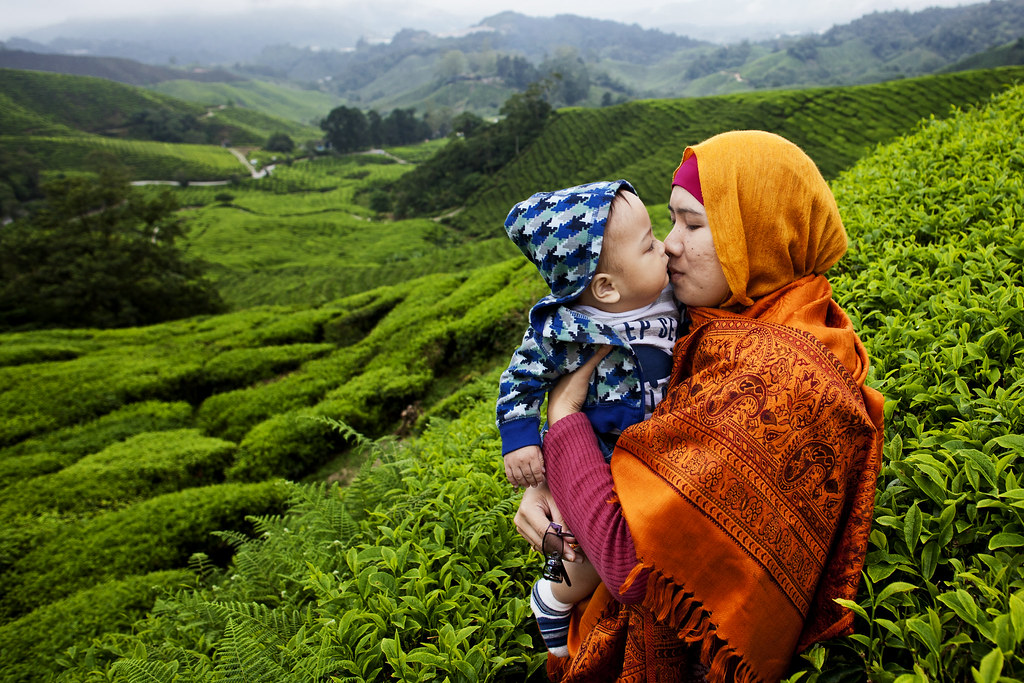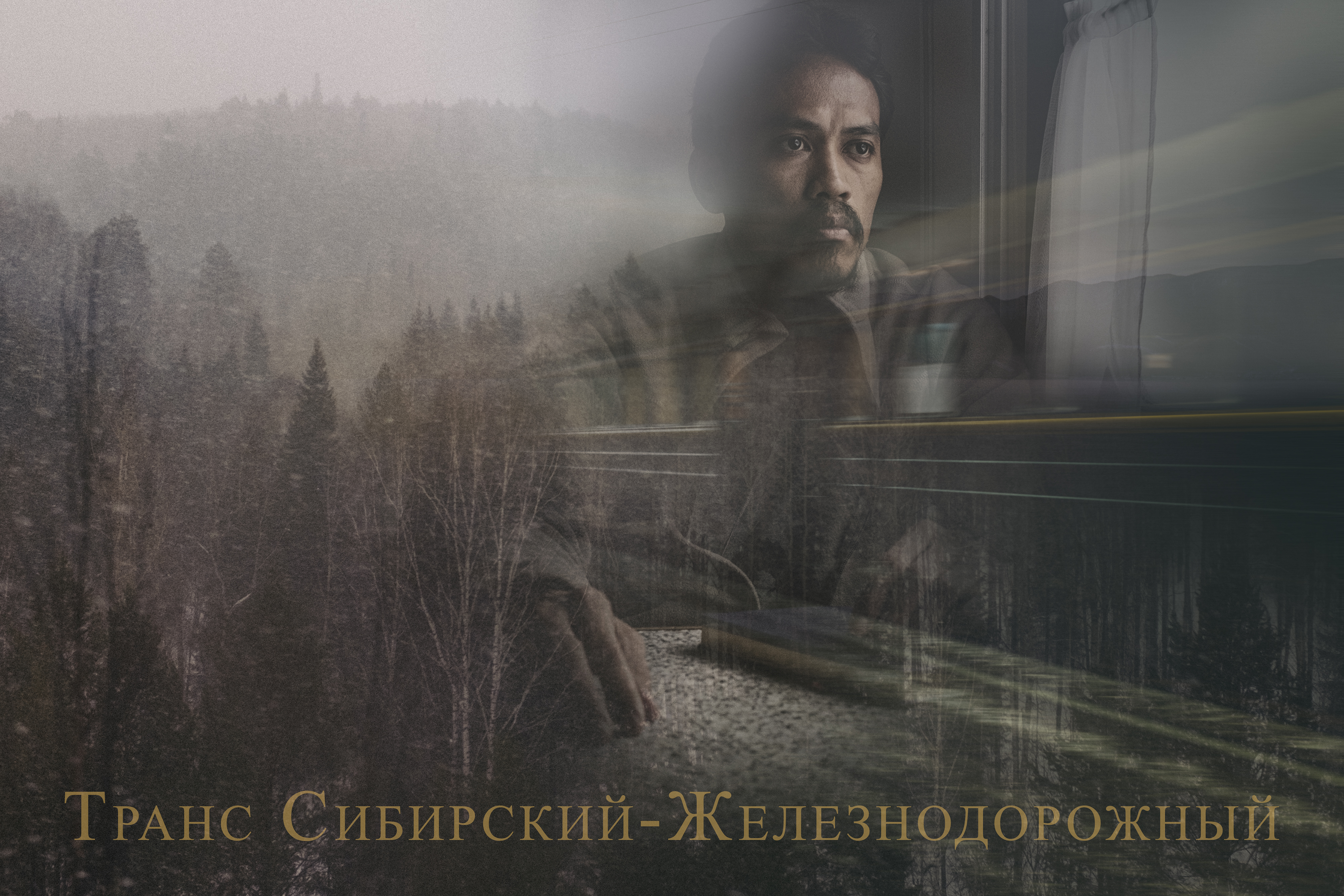Portrait Photography Tips | To Bokeh or Not?
© 2013 Wazari Wazir | Mother and Daughter | 50mm | ISO 160 | f/2 | 1/500
© 2012 Wazari Wazir | Mother and Son at Cameron Highlands | 24mm | ISO 200 | f/5 | 1/160
© 2012 Wazari Wazir | Sarangkot Pokhara | Nepal | 50mm | ISO 100 | f/11 | 1/160
Someone asked me, whether he need to “bokeh” his background or not when taking a portrait. Before that, to those of you who have no idea what is “Bokeh” comes from the Japanese word “boke” which means “blur” or “haze”. Generally speaking it is in out of focus area of an image which normally refer to the background of the subject, it can be behind a human, or building or behind the main subject that you are photographing.
Normally photographers use “bokeh” to make their main subject stand out from the crowd, we are talking about selective focusing here. To get a nice bokeh, we normally use the widest aperture on our lens, lets say if you have 50mm lens with the widest aperture of f/1.4, then if you use that aperture, you will have a very nice bokeh or nice blurry background separating your main subject from the background.
Now the question is to “bokeh” or not or to “blur” or not? May simple answer is, it depends, as a photographer you are a visual story teller, you tell the story to the viewers within the context of your frame, or you tell the viewers within the content of what you see within the frame of the camera viewfinder. There is no simple right or wrong answer.
For me, normallyI will use the widest aperture when I want to throw away the background out of focus, when I think that the background has nothing much to say about the person I’m photographing. For an example, the top photograph where I photograph my wife holding my daughter against the green grass during late afternoon. The photograph above was more about my wife and my daughter, the background has no context, it is purely to get a nice background with the backlighting. It is purely for aesthetic purpose.
If I chose to use smaller aperture like f/11 for the photograph against the green grass, it will become as a distraction to the person in photograph, so to avoid the green grass from becoming a distraction, I use big aperture, which is f/2, to throw away the background and make the subject standout.
The second photograph, I use 24mm and set the aperture to f/5, even though the widest aperture on that lens is f/2.8 but I didn’t use the f/2.8 simply because I want the background to be seen, I want people know that the photograph were taken at tea plantation. Those of you who live in Malaysia will immediately recognized the location, which is in Cameron Highland, even if you are not living here, I guess you can figure out what’s the location is, it is at the tea plantation.
The background adds context the photograph, normally photographers will associated the photograph as an environmental photograph, where you photograph the subject with its environment and people can easily recognise the environment, where the picture is taken, the people who saw the photograph will have an idea where the location is, compared to the first photograph, people have no idea where the picture is taken, it can be behind someone house, or from faraway place.
Frankly speaking I rarely use wide aperture when photographing someone during traveling. When we travel we wanted to get as much information about the place that we went to, there is no point using f/2 or f/1.4 on a 50mm lens when taking a picture of our friends or loves one against a magnificent Hagia Sohia, or Blue Mosque in Istanbul, the end result will look like that it was taken in a studio, but then like I said before, you are the visual story teller, but for me when it comes to travel photography, I rarely concern about bokeh, I try to get the background in focus so that people will recognise the place being photograph.
Take an example the photograph of my friend Ahmad Shukri, the photograph were taken with 50mm lens but I chose to use f/11, why? Simply because I want the background to be clearly seen, I’ve to use f/11 because the mountain are a bit farther behind. I didn’t use f/22, simply because I want to have some depth. If the picture were taken using f/1.4, then it will be pointless posing against the magnificent Fish Tail or “Machhapuchhure” peak at the Annapurna region, because the end result will be blurry background and the people viewing the photograph have no idea where the picture is taken.
So to those of you who have 50mm lens, with the widest aperture of f/1.2, f/1.4 or f/1.8, it is not necessarily to use the widest aperture on that lens when photographing people all the time, varying the aperture depending on the situation, the camera and the lens is an instrument to the photographers. You are the one to decide on how the story should be told, you are the visual story teller.
To bokeh or not is up to you, it is your story, but then a great story teller will choose the right words and a good photographers who wanted to tell his story visually will chose the right combination of composition, lighting, background, the choice of lens and aperture, the right shutter speeds, the right ISO, all of this combination if done rightly will yield a better story, will told a beautiful visual story. Use “bokeh” at the right place so that people who view your photograph doesn’t end up with a “blurry” story.
*Check out my Master of Colors eBook below to know how I end up with a beautiful Cameron Highlands photograph above…





3 Comments
azman
Terima Kasih En Wazari,sudah terang lagi bersuluh.
jeffrey k. edwards
Waz – another great and timely post! Many of us are always in the “hunt” for the ultimate lens that will produce the best bokeh. But what we fail to realize is that bokeh isn’t always needed. That being said, what is your favorite portrait lens for bokeh? Currently mine is the nikon 85mm f/1.4. But as I am using my fuji x-system more frequently, especially with travel I am in search of a smaller lens. Haven’t settled on the yet on the fuji 35mm f/1.4, the new ziess 52 mm f/1.8 or something similar. Any recommendations from your experiences on a smaller portrait lens that would fit these needs and make exceptional bokeh?
all the best from Nairobi ~ jeff
Wazari Wazir
Hi @Jeff, thank you stopping by, Actually I would love to have 85 mm f1/2 for my portrait lens but I don’t have one. Now my walkabout portrait lens is 50 mm f/1.4. 85 mm will be great portrait lens when shooting outdoors but it is not practical when it comes to traveling simply because you need a little bit of a distance between you and your subject when using 85 mm lens indoors like in the mosque or in the temple, hence I chose 50 mm.
It is not easy to recommend to you which portrait lens is suitable to you but generally speaking if you love shooting outdoors then, you already have what you need but if you prefer to shot indoors more often later on, then 50 mm or 52 mm will be a great choice.
Currently when traveling I like to shoot an environment portraiture and I hope in the next coming month I can get my hand on 35 mm f/1.4, currently I’ve 24 mm f/2.8 but I didn’t quite like the distortion and I think 35 mm will gives me much more natural look…
🙂